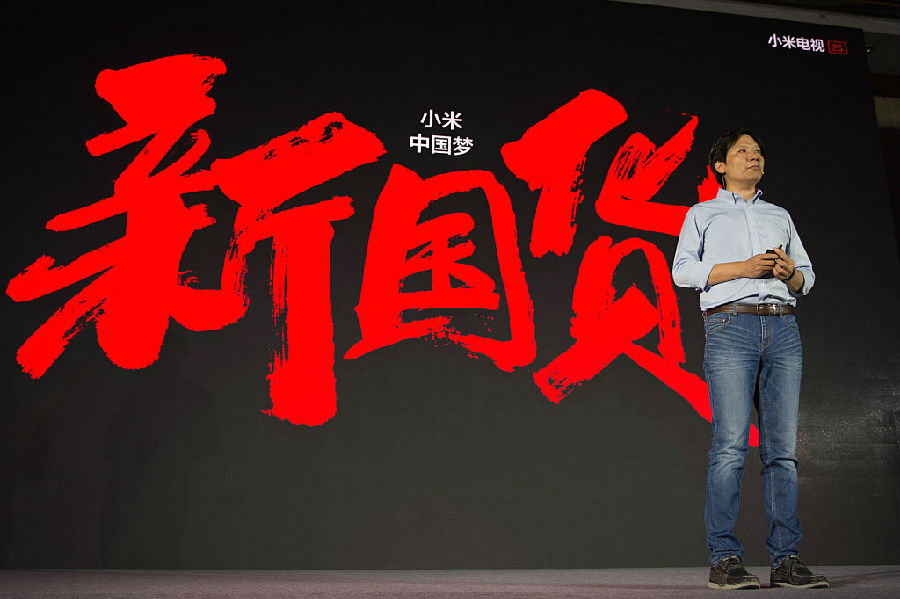
Xiaomi, the Chinese smartphone maker, said that its revenues in India had exceeded $1bn last year as it looks abroad for growth amid continuing competitive pressures at home.
中国智能手机制造商小米(Xiaomi)表示,该公司去年在印度的营收已超过10亿美元。国内持续不断的竞争压力正促使小米寻求在境外实现增长。
Chinese-owned technology companies have so far led the smartphone market in India. The subcontinent is seen as the next big untapped market for mobile makers at a time when growth has begun to flag elsewhere.
到目前为止,中资高科技企业引领着印度的智能手机市场。在其他地区增长已开始萎缩之际,这块次大陆被视为移动设备制造商下一个巨大的未开发市场。
Sales of Xiaomi’s smartphones in the country more than doubled from 3m to about 6.5m, Shou Zi Chew, its chief financial officer, told the Financial Times in an interview.
小米首席财务官周受资(Shou Zi Chew)在接受采访时告诉英国《金融时报》,小米智能手机在印度的销量从300万部增长至650万部左右,增加了一倍以上。
“What this [$1bn] milestone shows is we have successfully stepped out of China into the global arena,” he said at the Consumer Electronics Show in Las Vegas, where Xiaomi is exhibiting for the first time.
他在拉斯维加斯消费电子展(CES)上表示:“这一(10亿美元的)里程碑证明,我们已成功走出中国,登上全球舞台。”今年,小米首次在该展会参展。
“2016 was a watershed year for us as we truly became an international company.”
“对我们来说,2016年是个分水岭,我们真正成为一家跨国公司。”
Xiaomi is among the top three smartphone companies by sales in India, alongside Huawei and Lenovo’s Motorola.
小米和华为(Huawei)及联想(Lenovo)旗下的摩托罗拉(Motorola),是印度销量前三的智能手机公司。
To achieve that in just a couple of years, Xiaomi “replicated our Chinese strategy” of focusing on online sales and an ecosystem of companion products, championed by a passionate community of what it calls “Mi fans” instead of traditional advertising, Mr Chew said.
周受资表示,为了在仅仅两年时间内实现这一目标,小米“复制了我们在中国的战略”,聚焦于在线销售和配套产品生态系统,并由被小米称为“米粉”的热心群体(而不是传统的广告营销)宣传。
However, after a period of breakneck growth leading up to 2015, Xiaomi has struggled to maintain momentum in China in the past two years, losing its position at the top of the world’s largest mobile market to local rivals such as Oppo and Vivo.
不过,在经历了截至2015年的爆炸性增长期之后,过去两年小米难以维持在中国的增长势头,在全球最大移动市场中国让OPPO和vivo等国内竞争对手夺走了桂冠。
Mr Chew would not say whether Xiaomi’s global sales grew last year, after it missed its revenue targets in 2015.
周受资不愿透露去年小米在全球的销量是否增加。此前在2015年,小米未能实现其营收目标。
“The company has grown in a way we wanted it to grow . . . where we want it to grow,” he said. Instead of prioritising growth or market share gains at any cost, Xiaomi has focused on increasing efficiencies in its online sales and distribution and developing its “ecosystem” of companion Mi products.
他说:“小米在以我们希望的方式……在我们希望增长的地区……增长。”小米并未不计代价地把增长或抢占市场份额摆在首位,而是把注意力放在提高其在线销售和分销的效率、发展小米配套产品的“生态系统”上。
These range from internet-connected air purifiers and rice cookers to its wildly popular Mi Band fitness tracker, which has sold more than 23m units.
这些产品包括联网的空气净化器、电饭煲,以及人气爆棚、已销售逾2300万部的小米手环(Mi-Band)健身跟踪设备。
Xiaomi focuses on smartphones, TV sets, wireless routers and laptops, while it has invested in or supported 77 start-ups which together have sold more than 50m connected devices that tie into its central Mi Home app. A handful of these Mi ecosystem companies have exceeded Rmb1bn in sales, he said.
周受资表示,小米聚焦于智能手机、电视机、无线路由器和笔记本电脑。同时,该公司已对77家初创企业投入资金或予以支持。把这些都加起来,被捆绑至小米智能家庭(Mi Home)核心应用的可联网设备销量已超过5000万部。他说,有几家此类小米生态系统企业的销售额已超过10亿元人民币。
Many of those companion devices are on show at CES, where Xiaomi unveiled an ultra-thin TV set.
许多此类配套设备在拉斯维加斯消费电子展上亮相。小米在展会上发布了一款超薄电视机。
After its early success in India, Mr Chew said that Xiaomi was now increasingly confident that it could take its operating model, which he likened to a blend of Japanese homewares brand Muji and US discount retailer Costco for its combination of affordable quality and ultra efficiency, to other countries, including “the key big emerging market countries, Europe and the US”.
周受资表示,在印度取得初步成功之后,对于把这种运作模式推广至包括“重要新兴市场大国、欧洲和美国”在内的各国,小米如今越来越有信心。他表示,这种运作模式把买得起的品质和超高效率相结合,很像日本家居品牌无印良品(MUJI)和美国折扣零售商好市多(Costco)的混合体。
“The US is an important market for us,” he said. “We want to enter in the right way.”
他说:“对我们来说,美国是个重要市场。我们希望以正确方式进入美国市场。”
So far, Chinese handset makers have largely struggled to gain meaningful distribution and sales in the US, where Apple and Samsung dominate.
到目前为止,在苹果(Apple)和三星(Samsung)占统治地位的美国,中国手机制造商在很大程度上很难开辟有意义的分销和销售格局。
Mr Chew joined Xiaomi in mid-2015 from Yuri Milner’s DST Global, a significant investor in the seven-year-old Chinese company.
周受资是在2015年中从尤里•米尔纳(Yuri Milner)的DST全球(DST Global)跳槽到小米的。DST全球是成立七年的小米公司的一个主要投资方。
Xiaomi raised $1.1bn at a valuation of $45bn in late 2014, making it one of the world’s most valuable private tech companies.
2014年底,小米以450亿美元的估值筹得11亿美元,成为全球最有价值的私人持股高科技企业之一。
At the end of 2015, as sales began to wane in China, Xiaomi determined that “blind growth is dangerous”, he said. “We will always pursue the highest quality, the most cost efficient channels and return the cost savings to consumers. That is the way we have chosen to grow in 2016.”
周受资表示,2015年底,随着在中国的销售开始萎缩,小米认定“盲目增长十分危险”。“我们将始终追求最高品质和成本效率最高的渠道,将节省下来的成本返还消费者。我们选择用这种办法在2016年取得增长。”
Despite not raising new capital for more than two years, Mr Chew said “we don’t need to” raise more funds. “There is no reason to believe we are not profitable,” he said.
尽管小米已有两年多没有筹集新资金,但周受资表示“我们不需要”再筹集更多资金。他说:“没有理由认为我们不在盈利。”


